Would, or should, you consider a Hermès bag in suede? With all of the Hermès leather options, is this fabrication one you can use? Let’s find out.
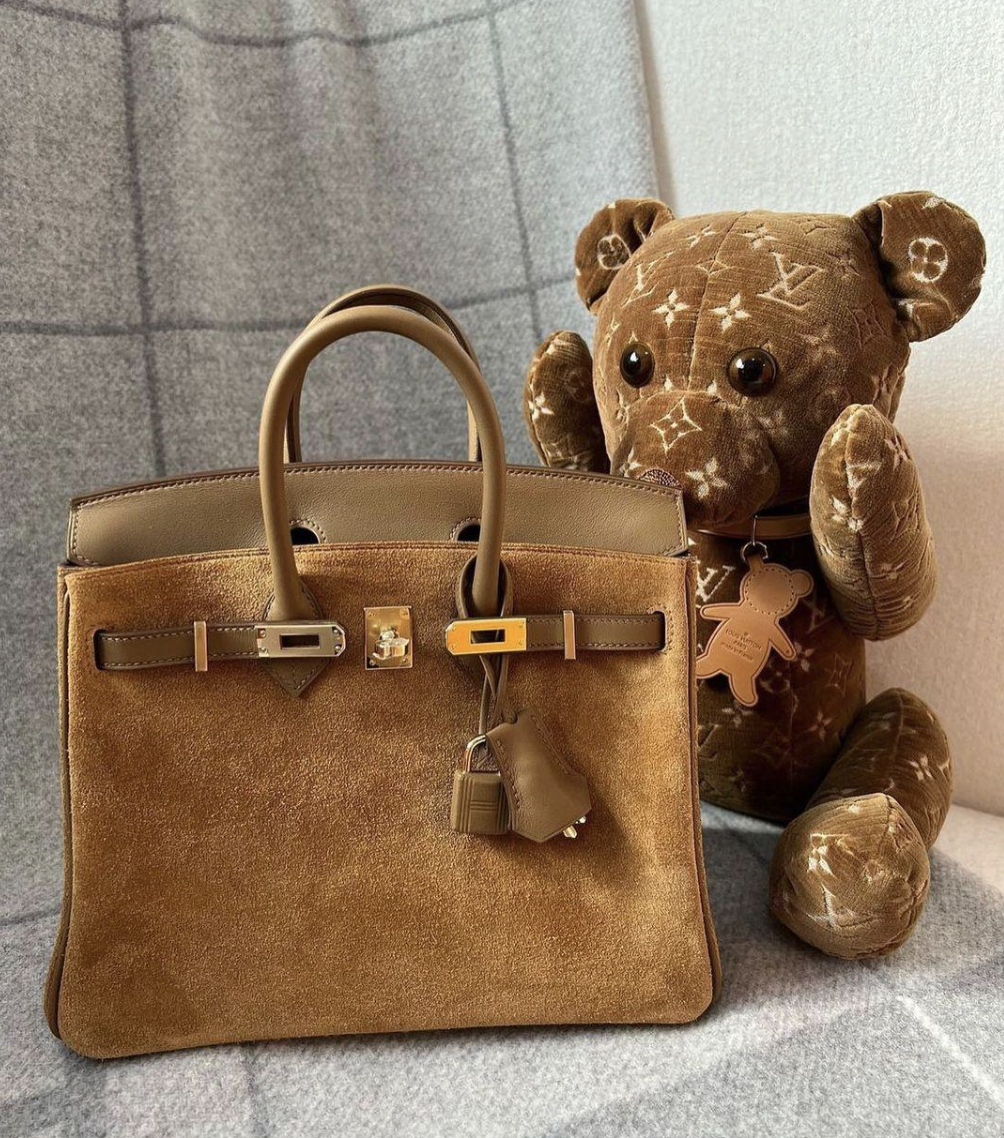
Photo courtesy of @thehermesclub
As the faithful loyalists we are of all things Orange, are we ever not thinking about Hermès (or specifically, our next Hermès Quota Bag)? Quite possibly not!
So, here’s a little exercise that’s sure to perk you up: take a moment, and think about all the Birkins and Kellys you’ve been seeing in the wild lately. What fabrication and formulation do they pertain to? What sizes and colors do you deem most popular?
If we were to make an informed guess, we’d certainly gravitate towards perennial PurseBop-favorites, Nata and Craie in Epsom. Probably with a good number of Togo thrown in for good measure – be it in the classic Gold-on-gold combo, the tried-and-tested Étoupe (with palladium hardware, no less!), or the unfailingly en vogue Noir.
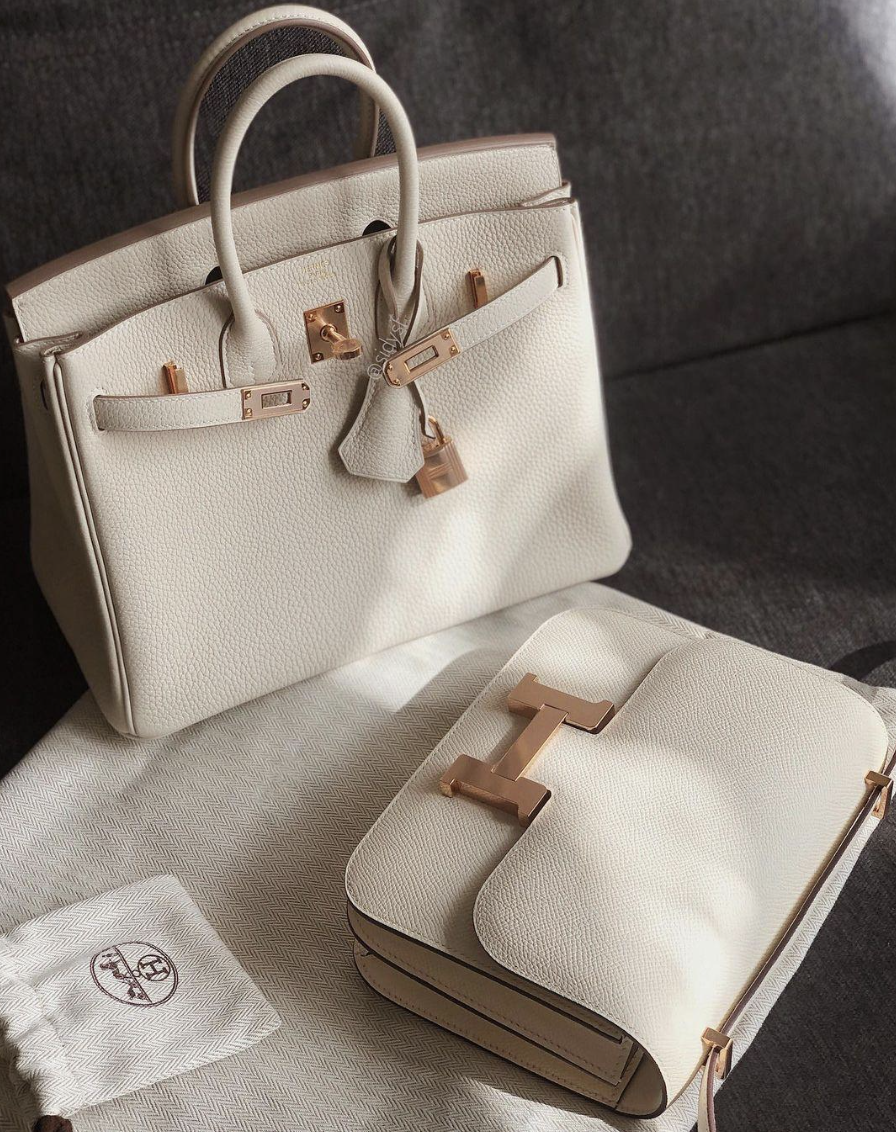
Photo courtesy of @sidysf
And now that we think about it, we’ve definitely come across our fair share of crocs and ostriches, coveted carries within the wider world of Hermès exotics. Maybe even a stunning specimen of the highly sought-after Himalaya on occasion!
But do you recall ever sighting an Hermès that came in – *gasps* – suède?
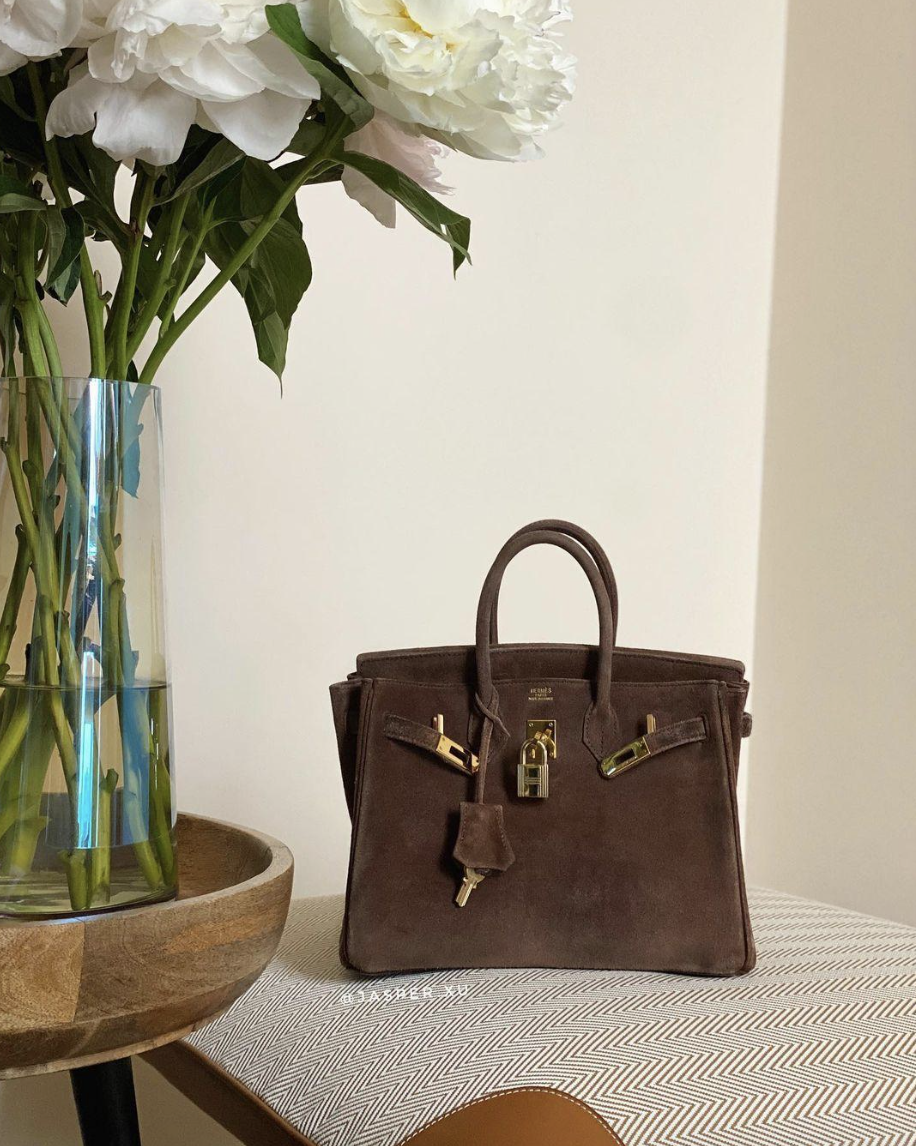
Photo courtesy of @jasper.xu
Our guess? Only in a middling minority, if you can even count yourself among the fortunate few to have encountered one at all! In fact, over its 187 years of existence, the house of the Big H has made use of over 80 different types of leathers, some as rare as the Volynka of Russian heritage, retrieved from a centuries-old shipwreck in the bowels of the sea. And yet, what remain arguably the most dreaded of the lot are the fairly regular Hermès leathers formally known as Veau Doblis and Veau Grizzly.
Is this rather harrowing reputation of suède really warranted? Well fear not, because we at PurseBop take it upon ourselves to investigate.
So, What Exactly is Suède?
Every season, the house of Hermès utilizes roughly 20 to 30 different varieties of leathers in its production runs, the vast majority of which is made from the hides of cows (Vache) or calves (Veau). Among them, suède remains a recurring contender, made from the underside of calfskin to achieve a specific, fuzzy texture with a soft nap; tactile, flexible, and velvety to the touch.
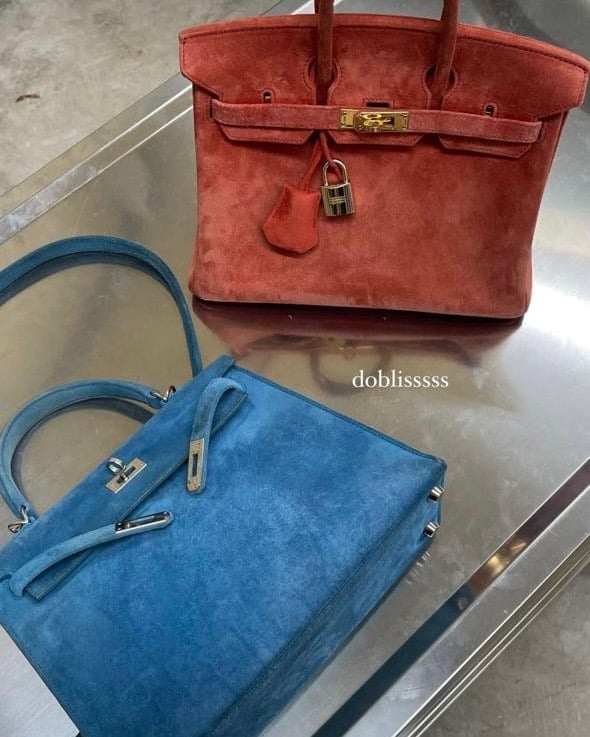
Photo courtesy of @luxurypromisenextgen
However, the loose collagen and open pores on suède, standing in contrast to the far more hardwearing outer surface of the hide (that we’ve come to know as full-grain leather), also renders it vulnerable to the elements, hence its reputation of hefty maintenance. Consequently, its use was previously limited to the manufacture of cool-weather gloves, belts, and boots, as opposed to bags or ready-to-wear; its name literally derived from the French term gants de Suède (gloves from Sweden).
But just because suède demands major upkeep doesn’t always mean it’s less durable than its other leather counterparts. Rather, as many a collector of vintage Hermès can attest, the oldest Kelly bags that you can find now, some dating back to its days as the Sac à Dépêches – and subsequently commanding well into the five-figures upon resale – are most commonly (common being relative here) available either in boxcalf, or in Veau Velours Doblis, i.e., suède!
Clearly, there’s much more to suède than meets the eye.
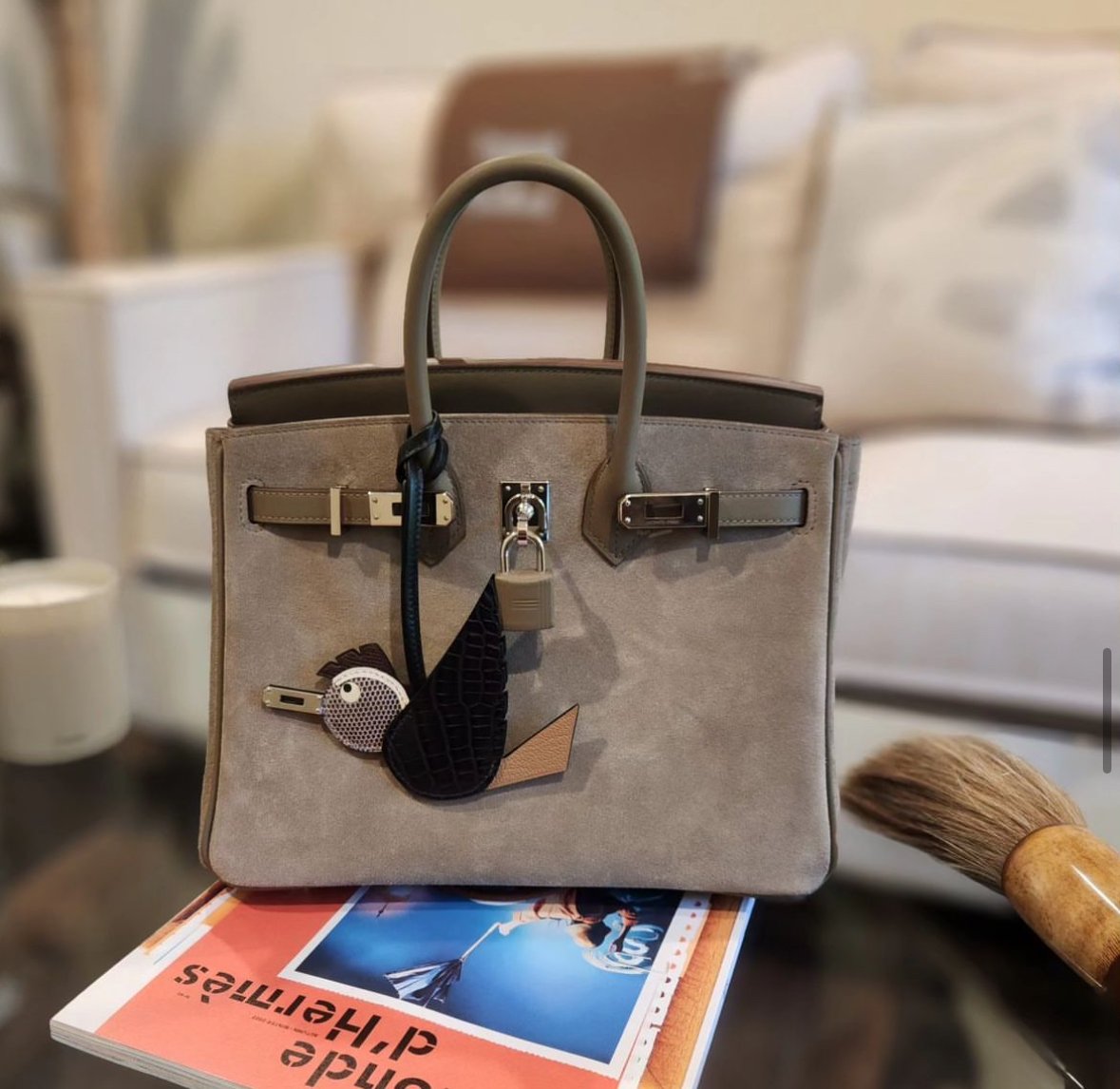
Photo courtesy of @mitchthebagboss
Veau Doblis & Veau Grizzly – What’s the Difference?
Doblis, therefore, is the “original” version of Hermès suède, its first known usage dating back to the 1930s. Of course, because it requires delicate handling, it was primarily used for smaller purses, like the vintage Kelly 20 and the Jige Clutch (only later has it come to be used for larger handbags, a discussion we’ll get into presently).
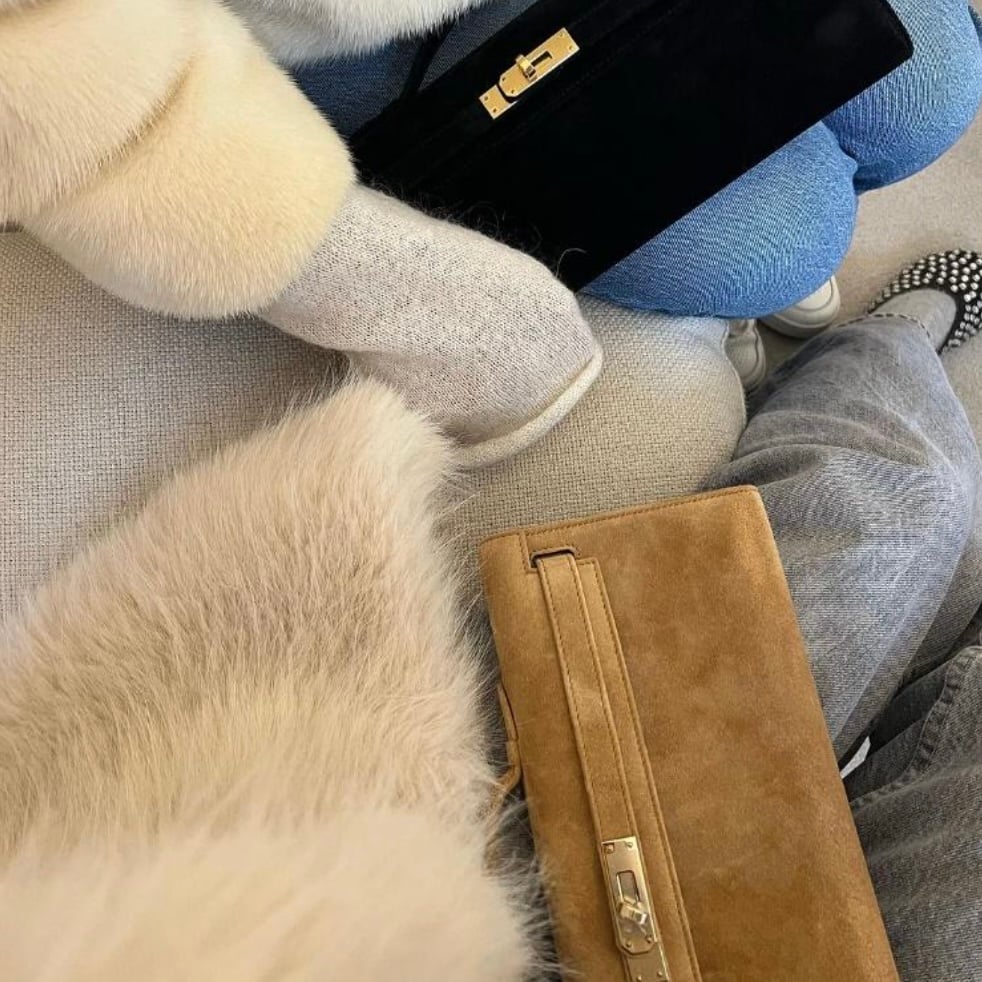
Photo courtesy of @luxurypromise

Photo courtesy of @luxurypromise
In 2010, Hermès introduced Veau Grizzly, with a longer nap, thicker texture, and rougher overall appearance, owing to the extensive sanding of the raw calf hides. As a result, while still delicate, Grizzly is seen to be the more resilient of the two, and because it’s just as soft and supple as Doblis, it has become the more commonly used variant as well.
Case in point, in 2005, under Creative Director Jean Paul Gaultier’s direction, Hermès saw the introduction of the Teddy Kelly, a plushy variant of the popular top-handle, available in sizes 32 and 35, trimmed in shearling, and finished in Veau Doblis. As of winter 2022, however, when the brand relaunched the coveted Teddy in the already überpopular Kelly 20 form, Doblis had been replaced by Grizzly!
As an aside, it’s also worth noting that Hermès briefly ran the production of a veined version of suède, known as the Veau Eversoft, in the mid-2000s. However, its specimens remain few and far between, mostly in the form of SLGs.
Additionally, although it seems Grizzly has taken center stage among Hermès suèdes, recently we did spot several Kelly-style bags in the display cases at the mothership in Paris. Could this be a hint of what’s to come for Fall 2024? Stay tuned.
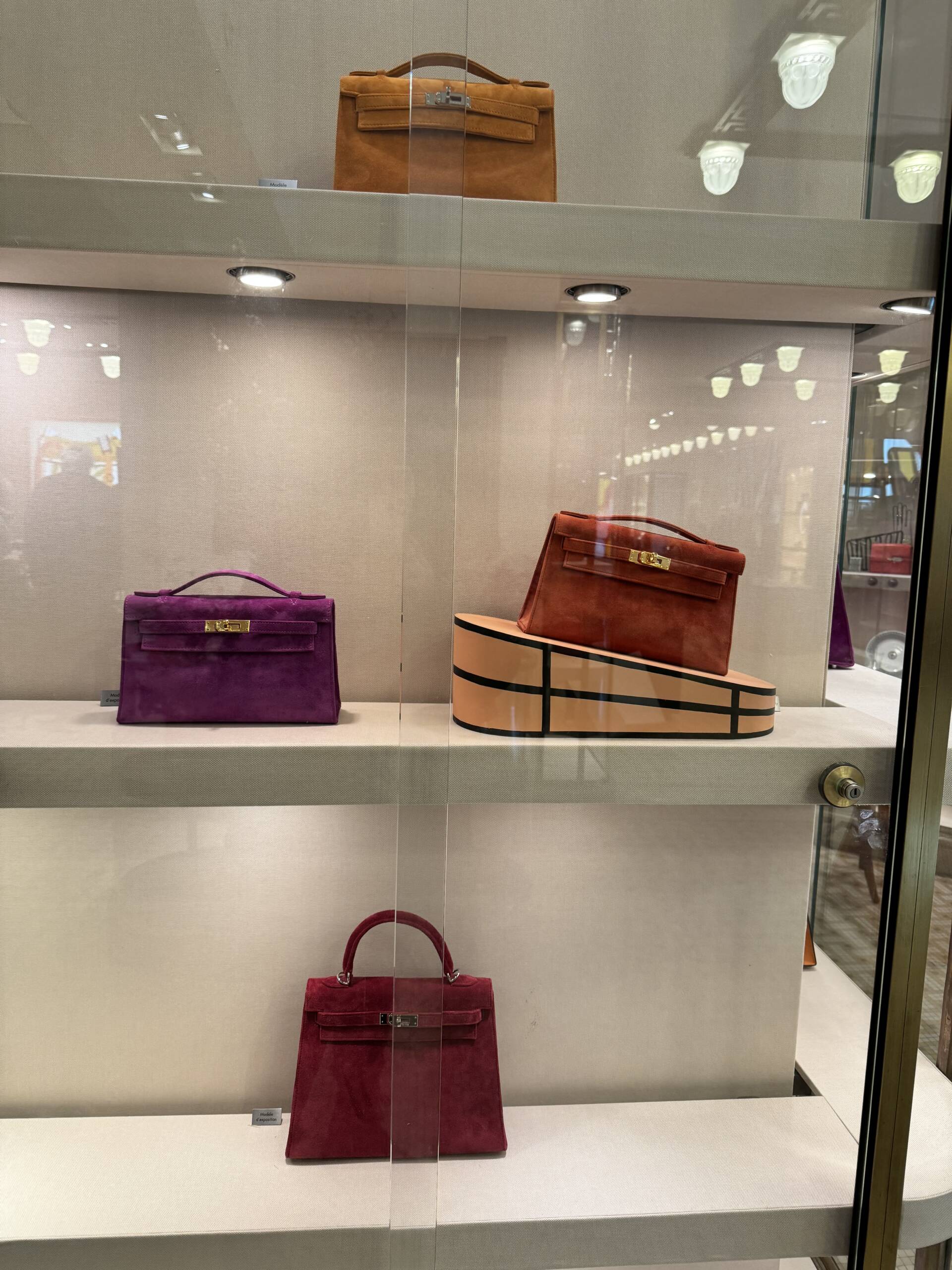
Display cases at Hermes FSH. Courtesy @pursebop

Photo courtesy of @stellaw2021
Gearing Up for Fall (in Style)
As far as fashion is concerned, suède has always been a chilly weather staple, period. Like raffia, toile, and linens reign supreme in the summer months, nothing screams fall like cozying up in bundles of cashmere, wool, and suède. And it’s for good reason too – suède is heavy, luxe, and sumptuous, better suited with a decadent floor-length fur-trimmed coat (fit for a mob wife) than on a sunny day at the beach.

Photo courtesy of @m.t.11968
However, if your SA at Hermès were to offer you a stunning Glycine Birkin in Grizzly, or a very special Ciel Kelly in Doblis one of these days, would you turn them down just because of suède’s seasonality? We’d say, think again.
In fact, if the recent trend towards quiet luxury has given us anything (aside from pages of internet discourse), it’s that suède, as the lush, sophisticated material it is, exists entirely in a league of its own, distinct from the assemblages of the seasonal and the trendy. We might go so far as to say, that suède works in spring too!

Quiet luxury icon Sofia Richie with a suède bag from The Row.
Photo courtesy of @sofiarichiegrainge
But Suède for Spring? Groundbreaking Indeed.
Before you think we’re crazy, hear us out.
Firstly, while the texture immediately takes our mind to the moodier end of the color palette – think Noisette, Violet, or Noir – they’re by no means the only colors in the Hermès repertoire, as fans have surely come to understand by now. Instead, made in scores of sprightly springtime colorways, from Vert Anis and Bleu Thalassa to Rose Indienne and Orange, it’s the shoppers of Hermès suède that are spoilt for choice!
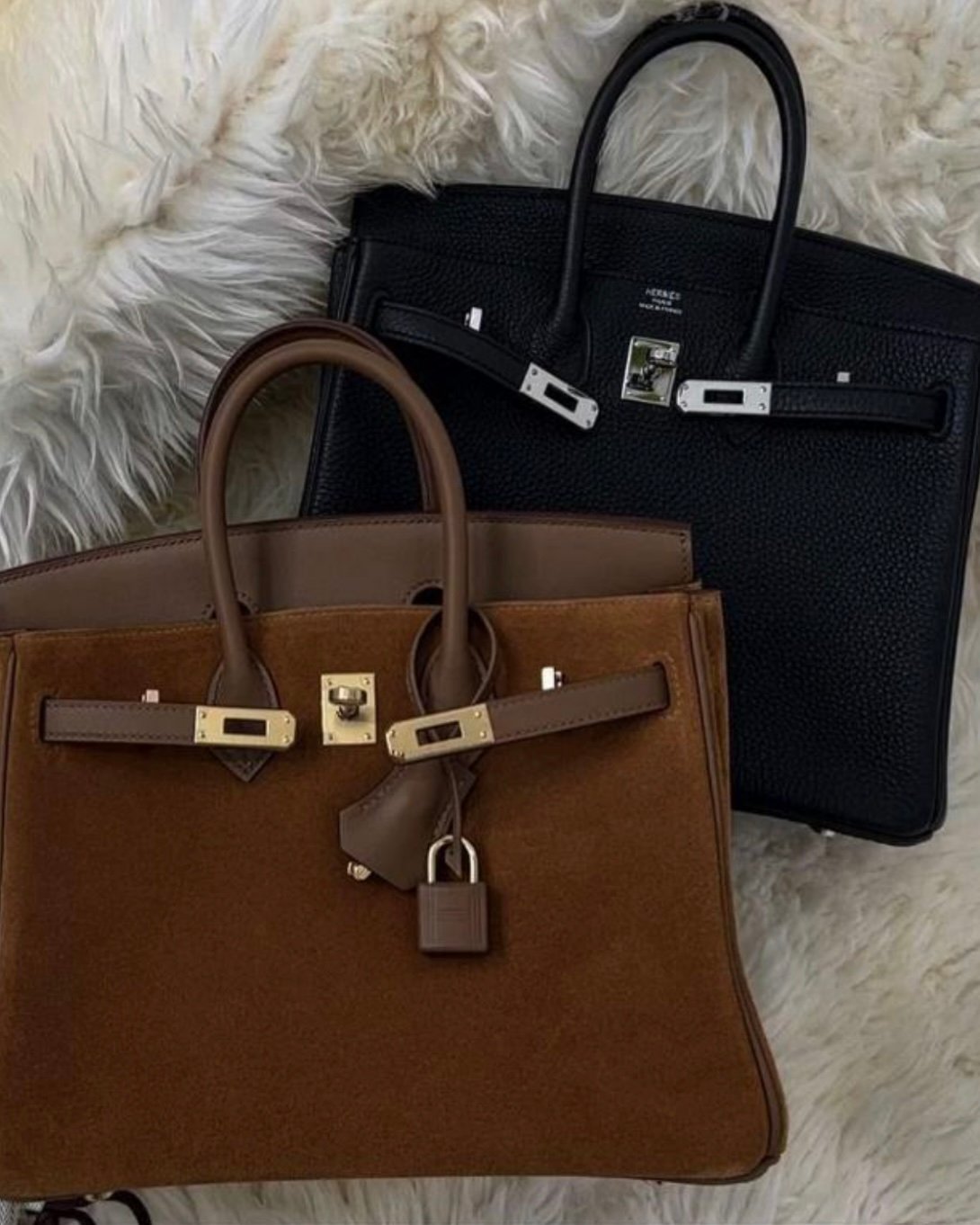
Photo courtesy of @tiana.peri
Secondly, while a Birkin or a Kelly is no easy feat to land on their own, to be offered a Doblis or a Grizzly surely takes the cake as far as special offers go, being highly limited-edition pieces presented to a precious few, and made to be cared for and cherished forever. Sure, you might have every reason turn down one now (and we haven’t even gotten to why yet), but how long before you’re offered another, right?
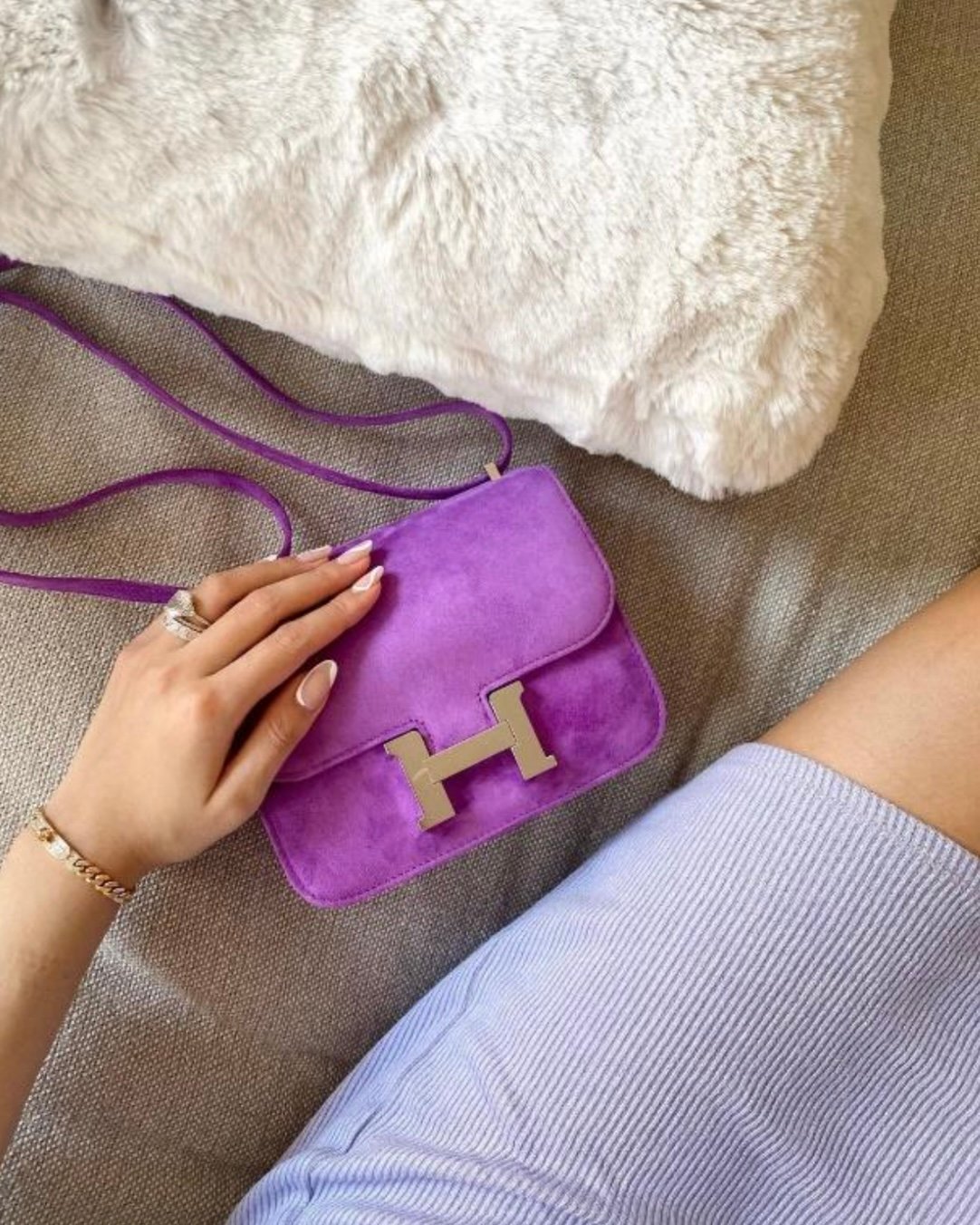
Photo courtesy of @samanthanie
Finally, treating yourself to the finest of Hermès suède is an act of sheer indulgence. Sure, you might not be able to use one every day, but the allure lies in their impracticality; casually strolling into a party with a Grizzly Kelly Pochette in tow – a vision in evening dressing – is sure to get everybody swooning!
And lest you still worry suède works only in the winter, remember when the Hermès debuted the Chypre sandals in the Spring of 2022 to massive fanfare? The most coveted among them were – you guessed it – the fluffy shearling and suède versions!
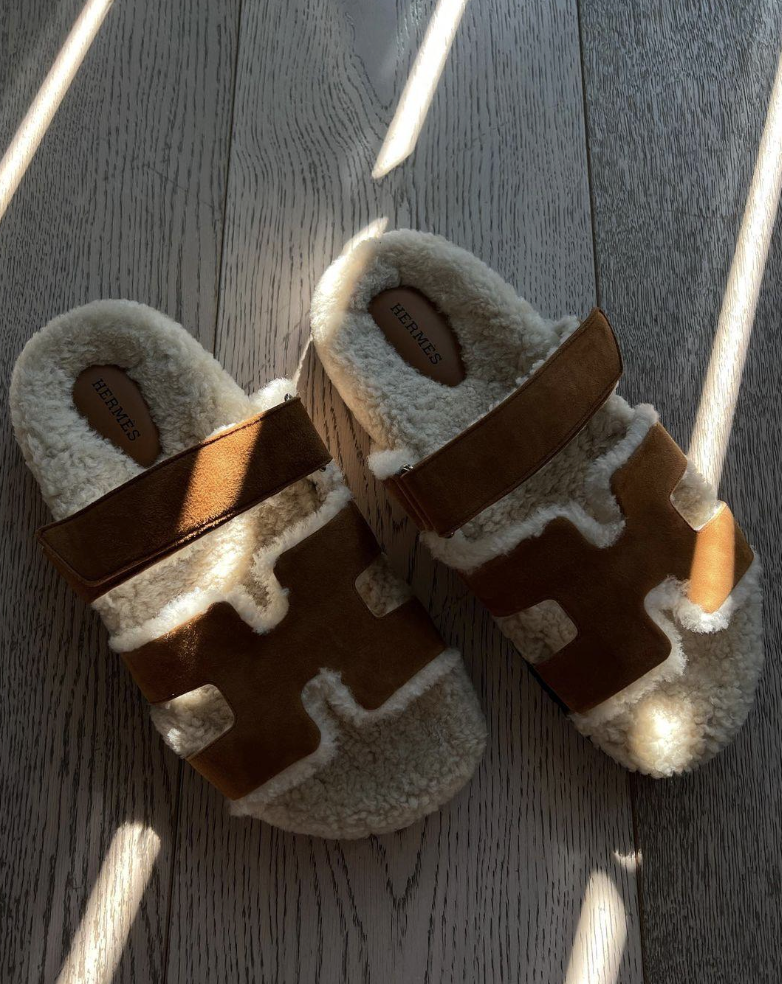
Suède Chypre Sandals. Photo courtesy of @leylahajrovic
Wear and Tear (and Care) for Suède
Aesthetics aside, however, the reason why suède has traditionally gotten so much flak boils down to its delicacy and upkeep. Being a lightweight, porous leather in nature, the material is susceptible to moisture, friction, and color transfer – you name it. And the resulting water (or worse, oil) stains, matting/stiffening of areas in most frequent human contact, corner wear, or balding can all be very difficult to reverse.
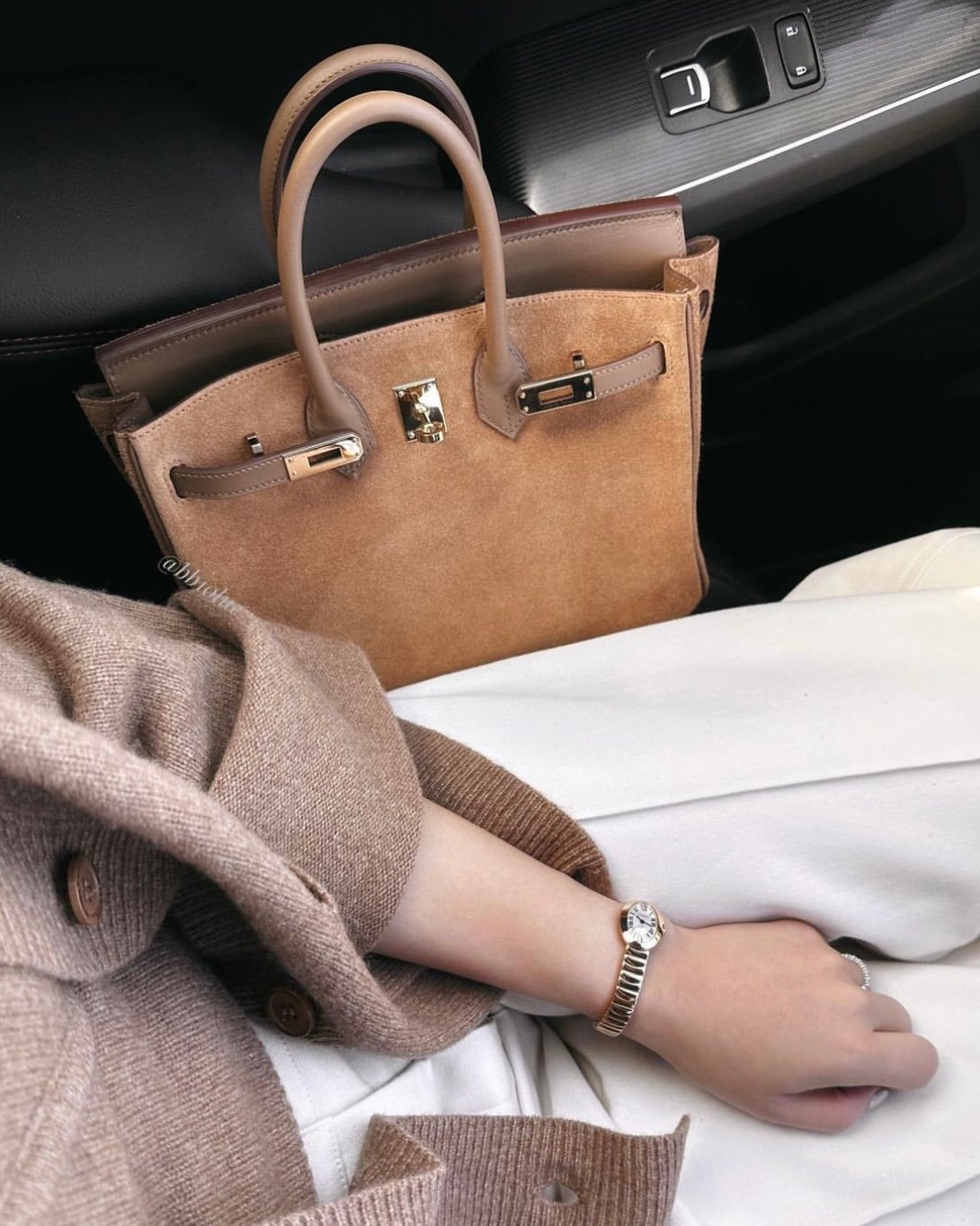
Photo courtesy of @bb10lue
It’s easy to see, therefore, why so many fashionistas try to steer clear of suède, specifically those residing in the humid or rainy regions of the world, prone to unexpected thunderstorms or rain showers. It’s also the reason why not just Hermès, but other heritage houses have shied away from utilizing the material on larger bags – suède, after all, doesn’t quite lend itself well to daily use, does it?
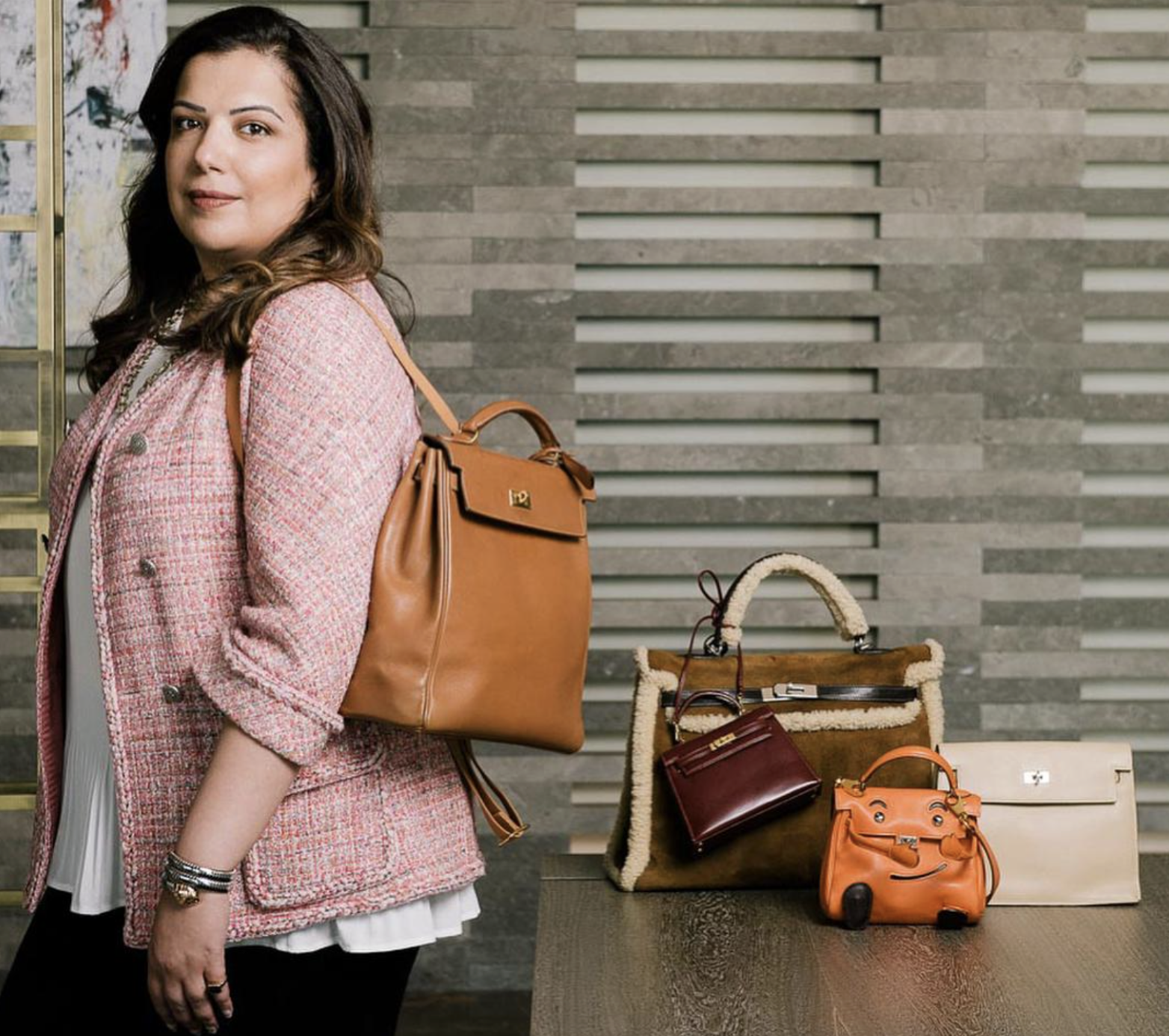
Photo courtesy of @howshespendsit
But perhaps no one knows better than the bag afficionado that the anxiety that stems from our particularly delicate purses is only the result of our love-language towards our handbags. Lest this worry outweigh the joys of consumption, we at PurseBop weigh in the opinion of the experts in caring for suède.
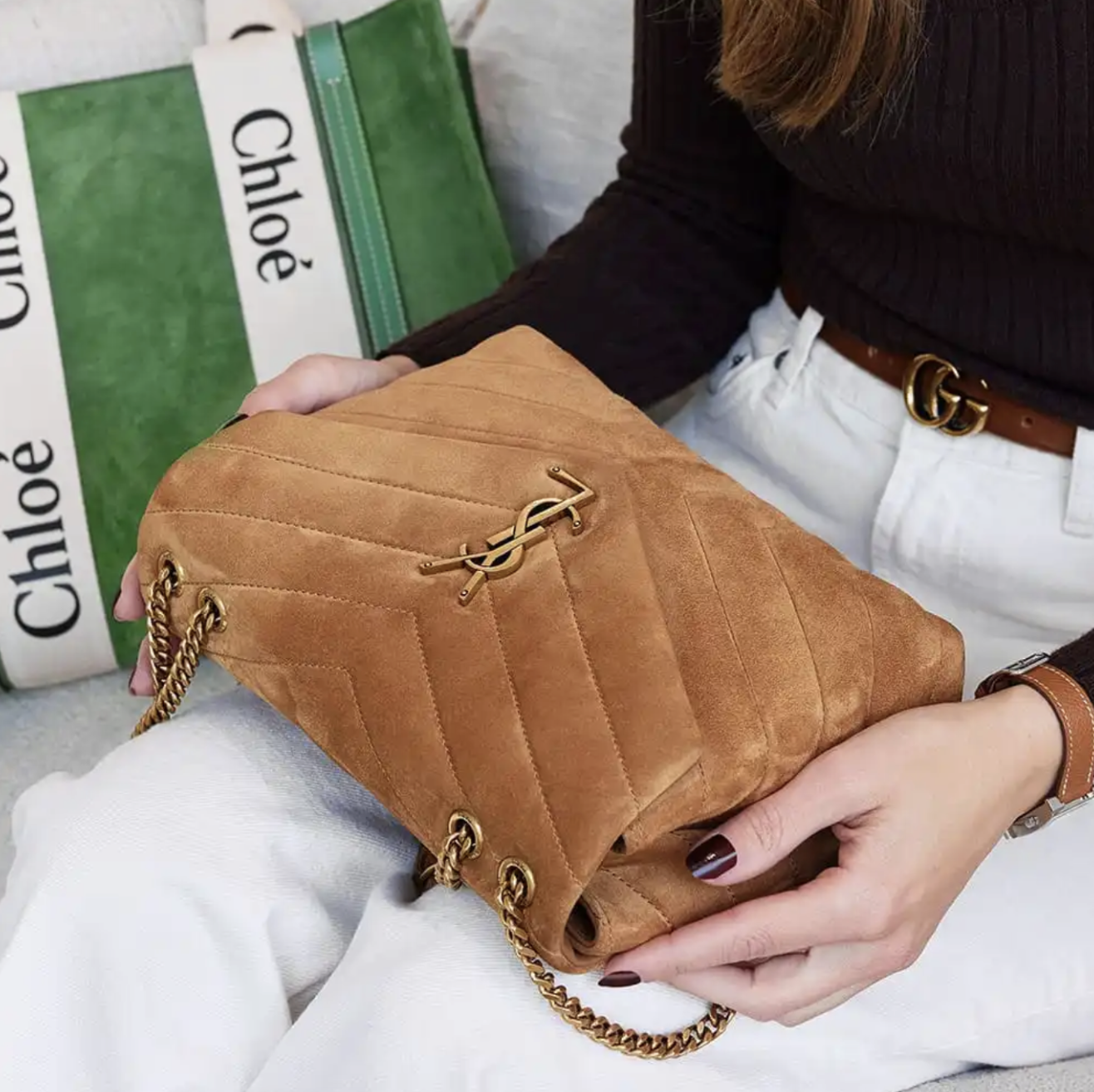
Caring for suède bags. Photo courtesy of @fashionphile
In fact, when you come to think of it, Doblis and Grizzly aren’t really much different from other, arguably more popular Hermès leathers, like Boxcalf or even BARENIA®. They merely require a little more pampering, like the fussy little toddler, nothing that we, as proud purse-moms, wouldn’t be more than happy to provide.
This can be as simple as giving them a dry rub-down with a suède brush after each use, and storing them in the original dust bag away from direct sunlight; or, on the more rigorous end of the spectrum, involve a complete routine of frequent waterproofing with leather gels and moisturizers (don’t forget to spot-test first!)

Photo courtesy of @vogue

Photo courtesy of @janefinds
As always, a second opinion can do no harm, especially when you’re doing initial damage control. And when all else fails (or you’d simply leave it to the experts), there’s always the Hermès spa to inject new life into your babies!
At the end of the day, suède, with the right preventative care, can be a lot more durable than is generally believed, lasting upto several lifetimes, and looking absolutely beautiful. Of course, using them as your everyday bags increases their chances of wear and tear. But if you’re up for the challenge, we say, why not?
And your biggest ally when it comes to suède? Why, the weather app, of course!
Updated: April 17th, 2024




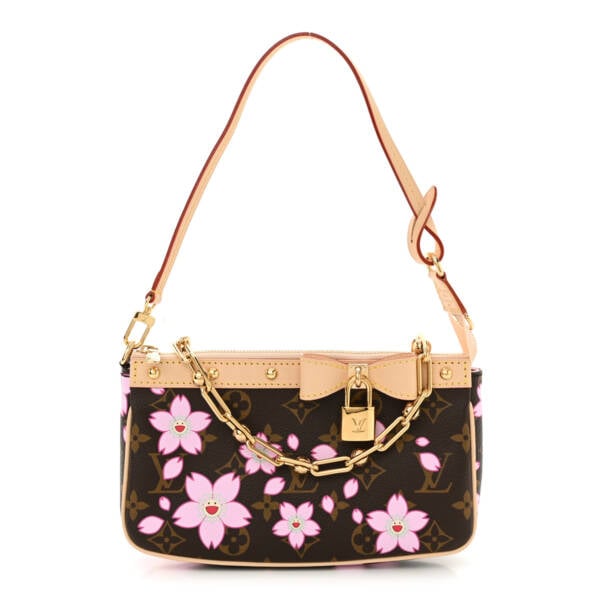
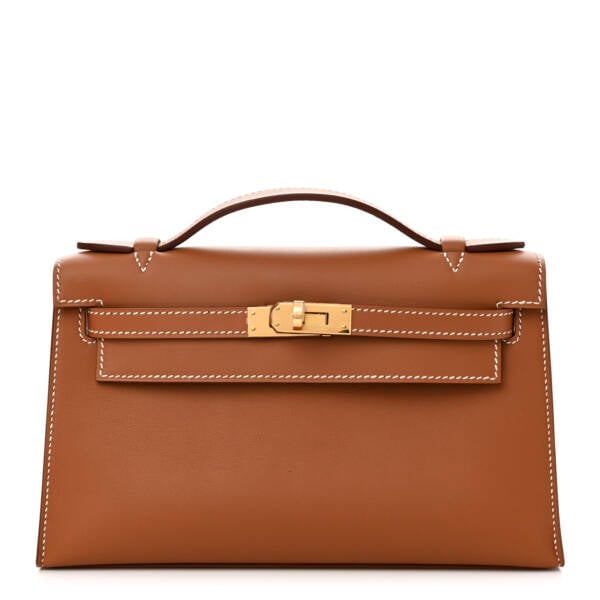
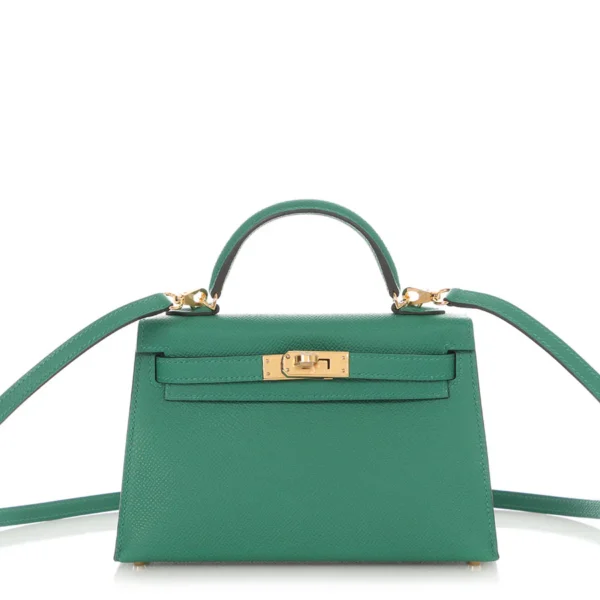
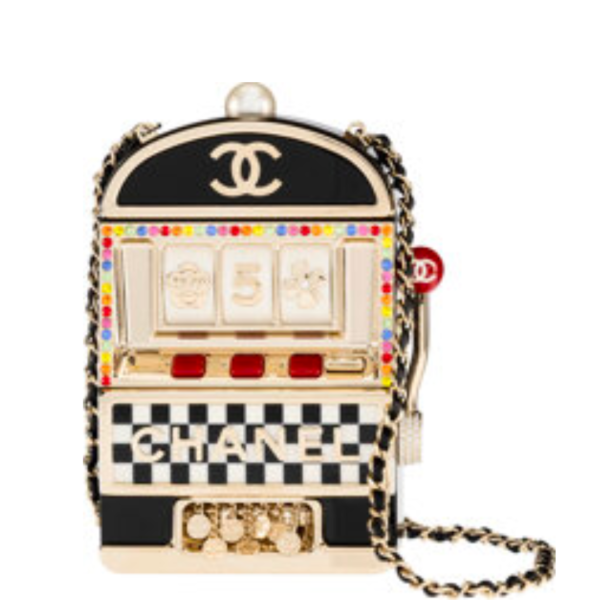
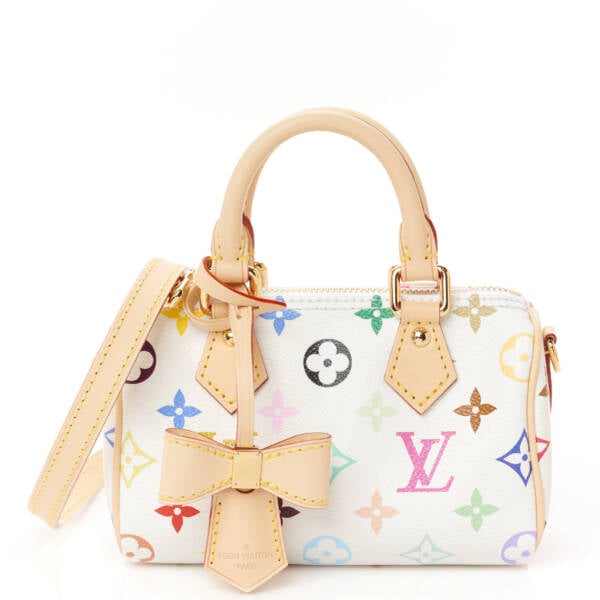
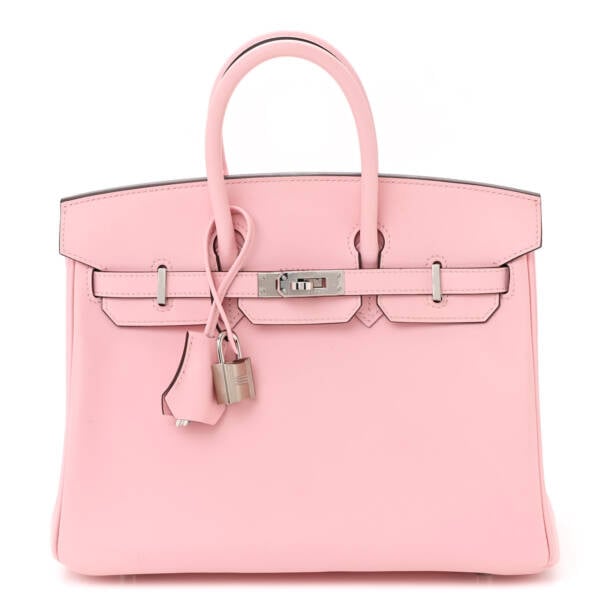
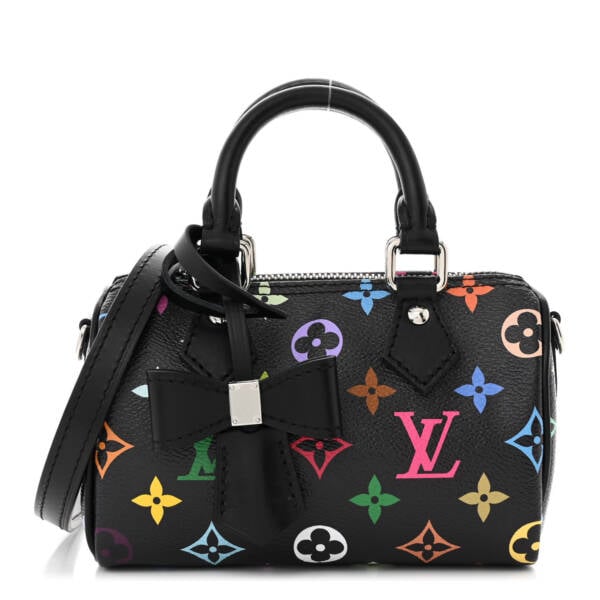
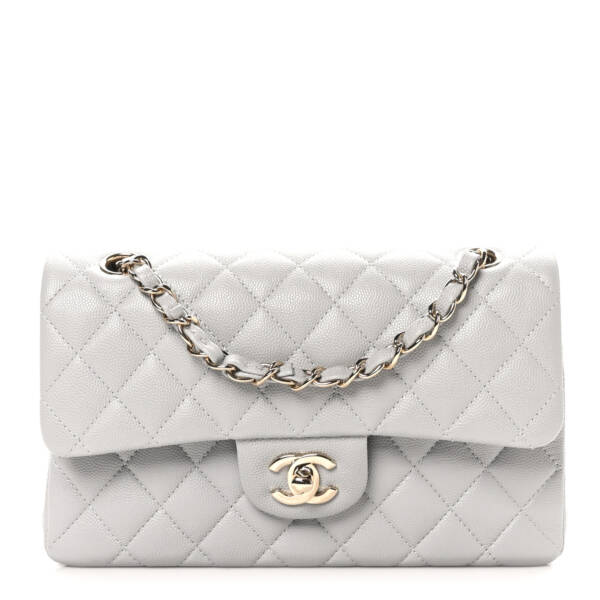


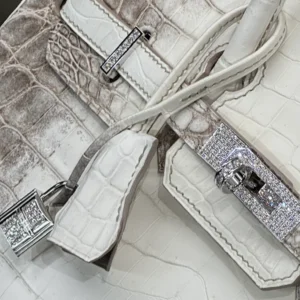
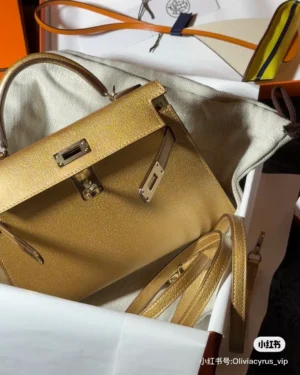
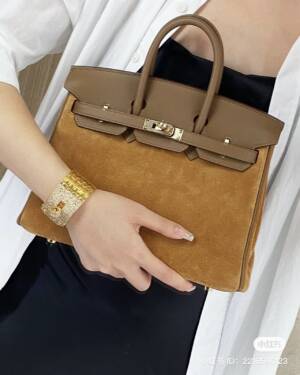



Comments